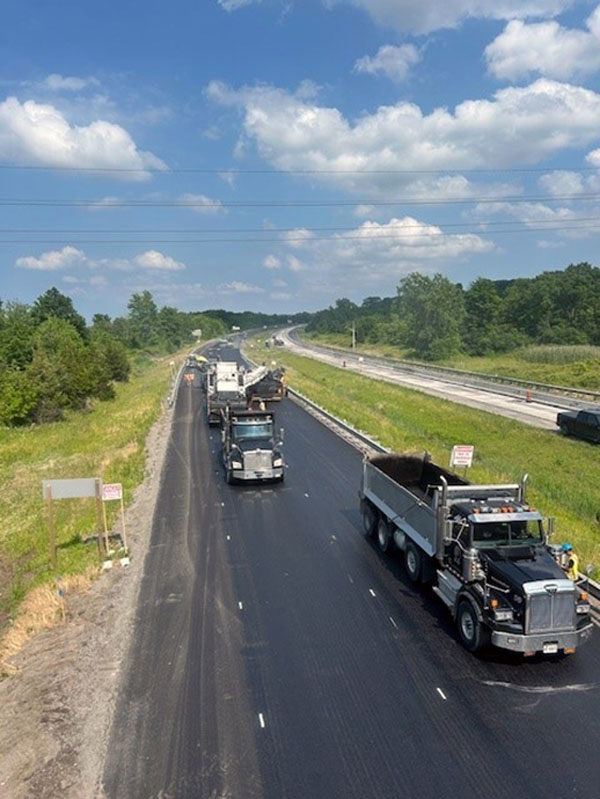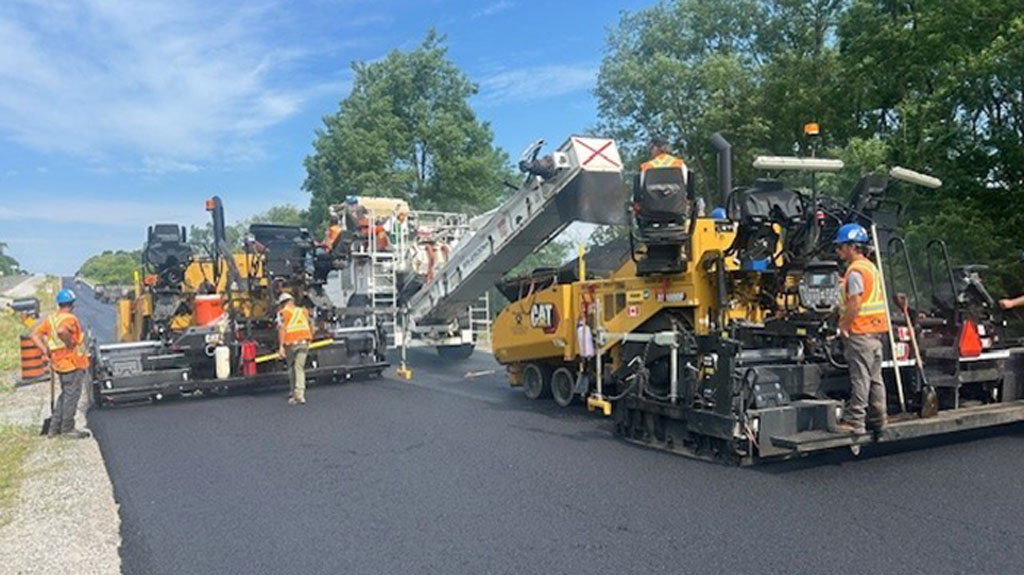A highway project to support a speed limit increase is among the projects underway in the Niagara Region by area contractor Rankin Construction.
The objective of the Ministry of Transportation governed Hwy. 406 project is to make safety upgrades from Hwy. 140 to two kilometres north of Hwy. 58 in the cities of St. Catharines, Thorold and Welland to support the increase in speed to 110 km/h from 100 km/h along this stretch of highway.
The $3.38 million contract is to implement roadside safety improvements, including steel beam guide rail extensions and culvert widenings.
When asked what provisions were being taken to account for the increased speed, Rankin Construction officials confirmed they were using materials that have improved friction resistance.
“The Superpave 12.5FC 2 mix, which has DFC Stone (premium aggregates) has been used for the last few years on MTO projects in our area. This mix has improved friction resistance,” said Bill Snow, senior vice-president of Rankin Construction Inc.
An MTO spokesperson said in an email, “In accordance with the ministry’s Surface Course Directive, only premium aggregates from MTO’s Designated Sources of Materials are used on Ontario’s high-volume highways, such as Highway 406. All highways, regardless of posted speed, require a premium surface course to be SP12.5 FC2.”
The project started in the summer of 2024 and is to be completed this fall.
On a much larger scale, Rankin was also awarded a $32.7 million contract to perform concrete base repairs, electrical upgrades, drainage improvements and the repaving of Hwy. 405 from the Queen Elizabeth Way to the Queenston-Lewiston Bridge.
The original design was based on construction operations being completed in four separate segments which had two construction stages per segment. The first segment starts at the west limit, just east of the ramps to and from the QEW, and segment four starts near the Stanely Avenue ramps and extends to the Queenston Lewiston Bridge.

Rankin Construction submitted change proposals to the MTO, that resulted in reduced construction time, reduction in cost and improved quality of work for the westbound portion of the project.
Two main change proposals were executed, the first in the fall of 2023 that included detouring westbound traffic completely off of Hwy. 405 between the Queenston Lewiston Bridge and Stanley Avenue, allowing full highway closure in segment four westbound and completion of work in that segment in a single stage.
The second main change proposal was executed in the spring. It included detouring westbound traffic completely off Hwy. 405 between Stanley Avenue and the QEW, allowing full highway closure in segments one, two and three westbound and completion of work in those segments in a single stage.
“Change proposals allowed us to improve worker and public safety, reduce construction durations, improve quality of work (i.e. echelon asphalt paving, use of non-accelerated concrete mixes for base repairs), and reduce costs for approximately (one half) of the project,” said Snow.
All westbound project segments were completed prior to this summer and the eastbound portion of the project is expected to be completed in the fall of 2025.
“We really appreciated the support from the Niagara Region, Niagara Falls Bridge Commission and the Niagara Parks Commission who worked with us to make the required detours available, allowing implementation of the change proposals. We also appreciated the support from the MTO in working with us make these change proposals happen resulting in reduce costs to taxpayers,” said Snow.




Recent Comments